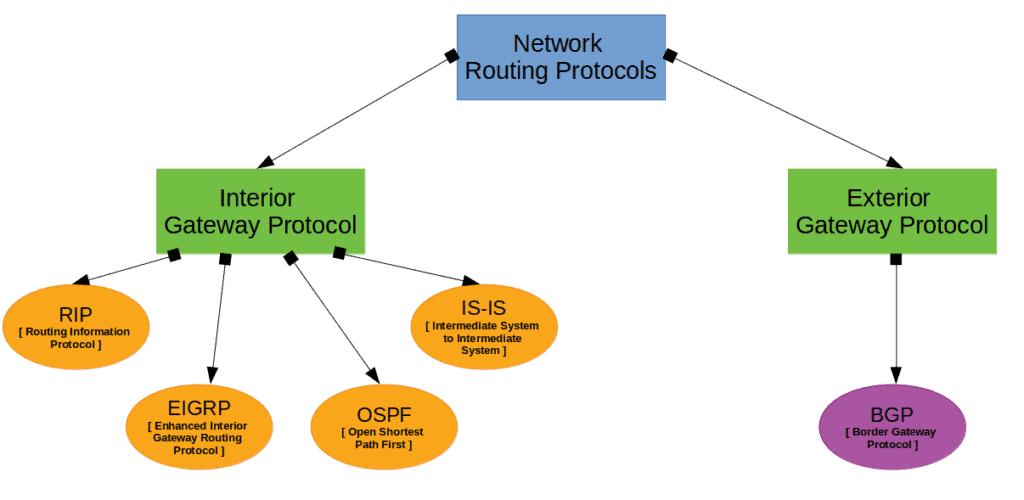1. Introduction
More often than not, as network administrators, we commonly come across routing protocols such as BGP and OSPF while designing and troubleshooting. This is because these routing protocols are the backbone of system communications.
In this tutorial, we’ll elucidate networking protocols, their types, and the major differences between EIGRP, OSPF, and BGP.
Without further ado, let’s get into the nitty-gritty details of it.
2. What Are Networking Protocols?
A network protocol is an established collection of rules and standards that help specify how data must be sent to and received from various devices. These protocols act as a common language for computer systems to communicate with each other. The Open System Interface (OSI) is the framework used to establish open communications between the systems. Amongst all protocols, TCP/IP [Transmission Control Protocol / Internet Protocol] is the most widely used in communication networks. It’s the set of layered protocols used for network communication.
Though most network traffic uses TCP/IP, other networking protocols do exist. To name a few: ICMP (Internet Control Message Protocol), IPSec (Internet Protocol Security), IGMP (Internet Group Management Protocol), etc.
Typically, consortiums like the IEEE (Institute of Electrical and Electronics Engineers), IETF (Internet Engineering Task Force), W3C (World Wide Web Consortium), ISO (International Organization for Standardization), and TU (International Telecommunications Union) will define and publish different network protocols that can be leveraged by the systems.
3. Network Routing Protocols
Routers are important backbone components for server-client communication because they help route network traffic between devices in the most efficient way. To identify the network’s shortest path, the router uses routing protocols. These protocols help the routers find the best path based on certain parameters and forward the user’s data.
The most well-known protocols include BGP, EiGRP, RIP, OSPF, and IS-IS:

4. Differences: EIGRP vs. OSPF vs. BGP
5. Conclusion
In this article, we’ve learned about the basic network routing protocols, which are the real backbone of the communication systems that exist today. The router uses these protocols for identifying the best routes and forwarding user traffic.
Further, we’ve also dove deeper into the distinctions between EIGRP, OSPF, and BGP. As we see, each routing protocol has its own advantages and disadvantages based on the network design and architecture. Many businesses may also deploy different routing protocols concurrently on the same network using route redistribution strategies.